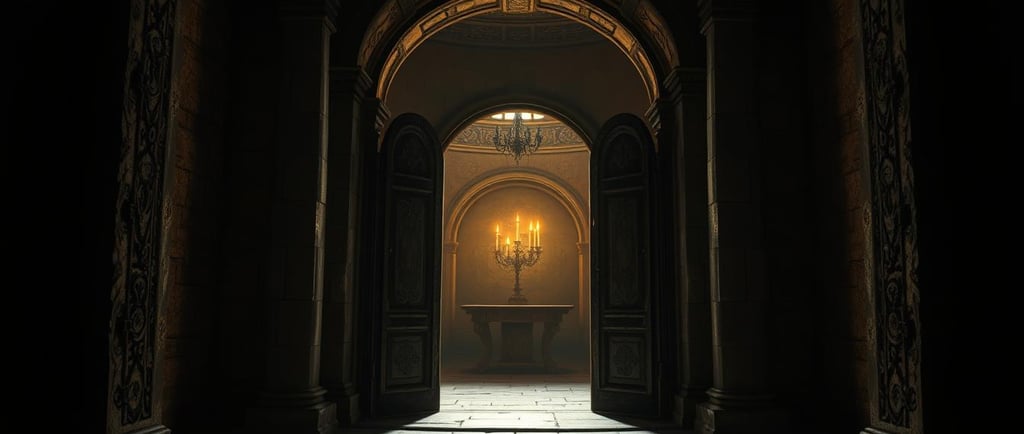Sacred Thresholds: Doorways That Felt Like Portals
Or, On the Art of Leaving and Becoming.
DISPATCHES FROM PURGATORY
Valkyrie
7/16/20253 min read


There’s a particular hush that greets you at the edge of a threshold. Not silence exactly—more like a held breath. As if the walls remember something. As if the doorway itself knows the gravity of your passing.
We often mistake them for the mundane: doorframes, arches, lobbies with scuffed floors. But thresholds—true thresholds—are portals. Sacred boundaries where the air shimmers with potential and the soul pauses mid-step, aware it’s about to change.
This is a love letter to those thresholds. The ones that dared me to enter or leave, that whispered ancient rites as I crossed. Let’s linger in the liminal, in the before-and-after, and listen.
The Alchemy of the In-Between
Thresholds are not just lines to be crossed—they are initiations. They demand something of us: a relinquishment, a readiness, a rite.
Across time and culture, doorways have been more than passageways. They’ve been guardians. Judges. Midwives. They ask: Who are you now? Who will you become on the other side?
And so we have rituals—silly ones, sacred ones, forgotten ones revived in muscle memory. Stepping over the threshold with your right foot. Carrying a bride so no spirits catch her unguarded. Sweeping the entrance at new moons. Each one a quiet spell, a pact with the unknown.
“The threshold is a frontier between two worlds, a place of power where the ordinary rules do not apply.”
Janus, Roman god of beginnings and endings, guarded doorways with two faces—one looking forward, one looking back. A perfect symbol for the self suspended between what was and what could be.
Doorways That Altered Time
Some thresholds don’t just change us—they change time itself.
There are doorways in this world that do not behave. The gates of Angkor Wat and Karnak, for instance, are not just architectural marvels. They are orchestrated awakenings. Step through and something in your chest uncoils, ancient and alert.
The gate at Karnak, flanked by a forest of columns rising like stone prayers—who among us hasn’t felt their spine lengthen in such places? These temples are not built to house gods. They are gods, cracked and patient, still waiting to be crossed.
And Angkor Wat? That is no mere entrance—it’s a wound in time that never healed, a dreamscape where every step forward feels like a descent inward. Doorways like these don’t lead somewhere. They lead deep.
My Own Thresholds: The Ones That Unmade Me
Not all portals are gilded in stone. Some are rusted fire escapes at 3 a.m. Some are whispered goodbyes on a hospital floor. Some don’t even have doors.
For me, the most powerful thresholds have been wordless. Fields I crossed alone. Letters I almost didn’t send. Airports. Altars. A kitchen door I hesitated at before telling the truth.
And then there’s pilgrimage—the sacred act of leaving with intention. These paths are strung with invisible thresholds: the first step away from safety, the silent reverence at a shrine, the moment your shadow falls on sacred ground and knows.
These are “doorways without doors.” Liminal spaces where we slough off the known like old skin and meet ourselves, raw and blooming.
How to Make Your Own Threshold Sacred
You don’t need a temple. You don’t even need a door. What you need is willingness.
A threshold becomes sacred when you name it. When you acknowledge the crossing. When you offer something to the unknown—your fear, your hope, your old name—and step through anyway.
Maybe it’s a journal page you haven’t dared to write. Maybe it’s a conversation. A move. A spell. A step.
Here is the secret: thresholds aren’t found. They’re made. Carved with intention, crossed with devotion.
And so—if you feel the pull, if something ancient is whispering at the edge of your ordinary day—go to it. Stand at the brink. Breathe. Bow, if you must. And then—
Cross.
© 2025. All rights reserved.
